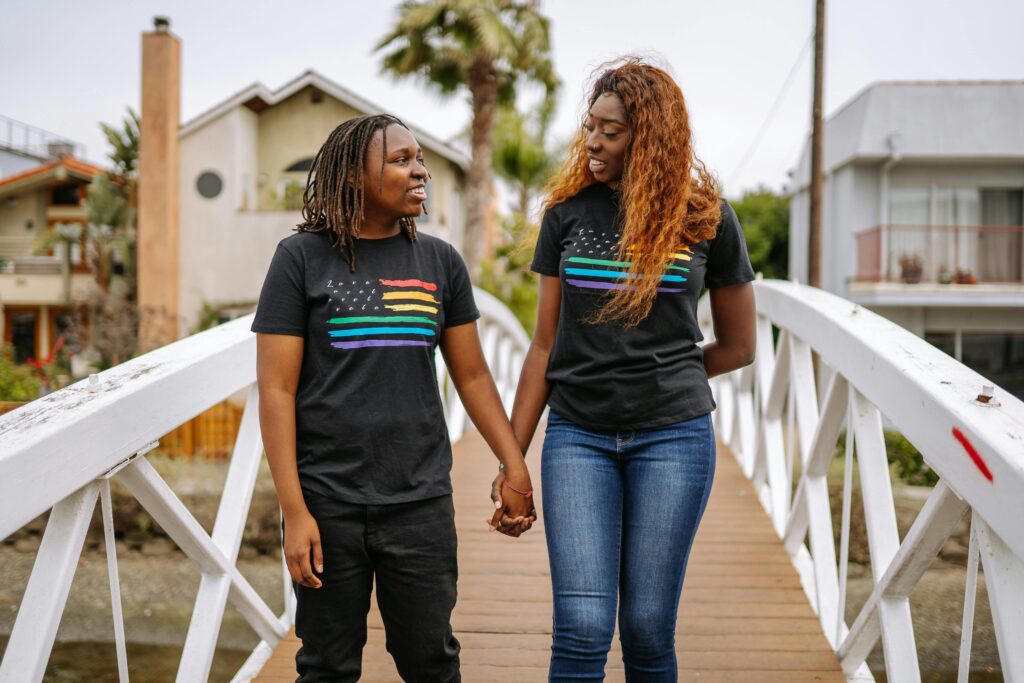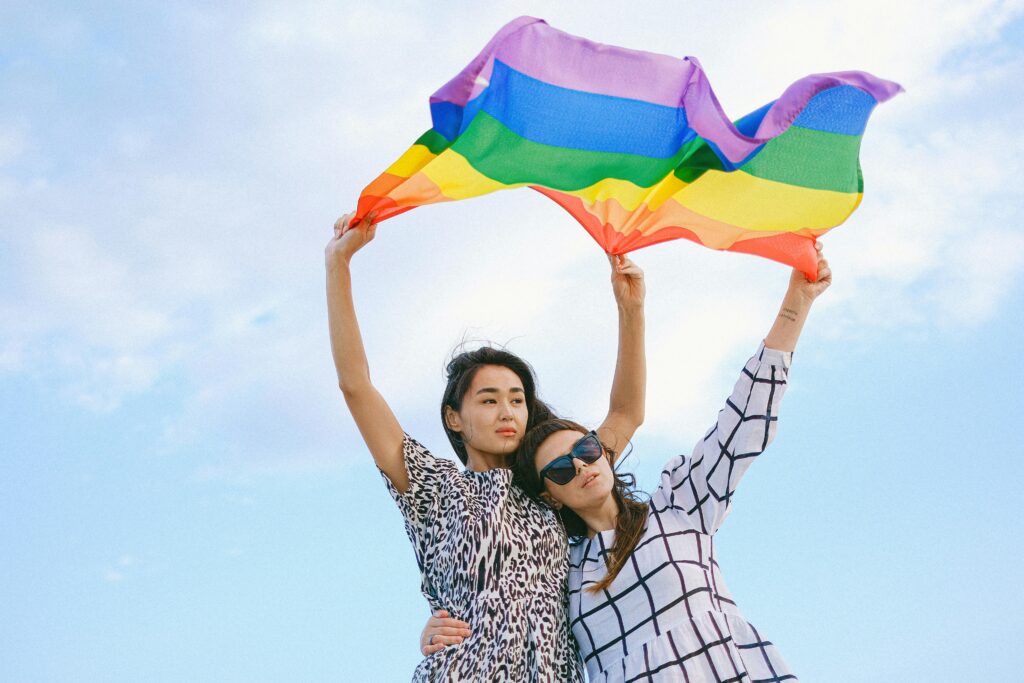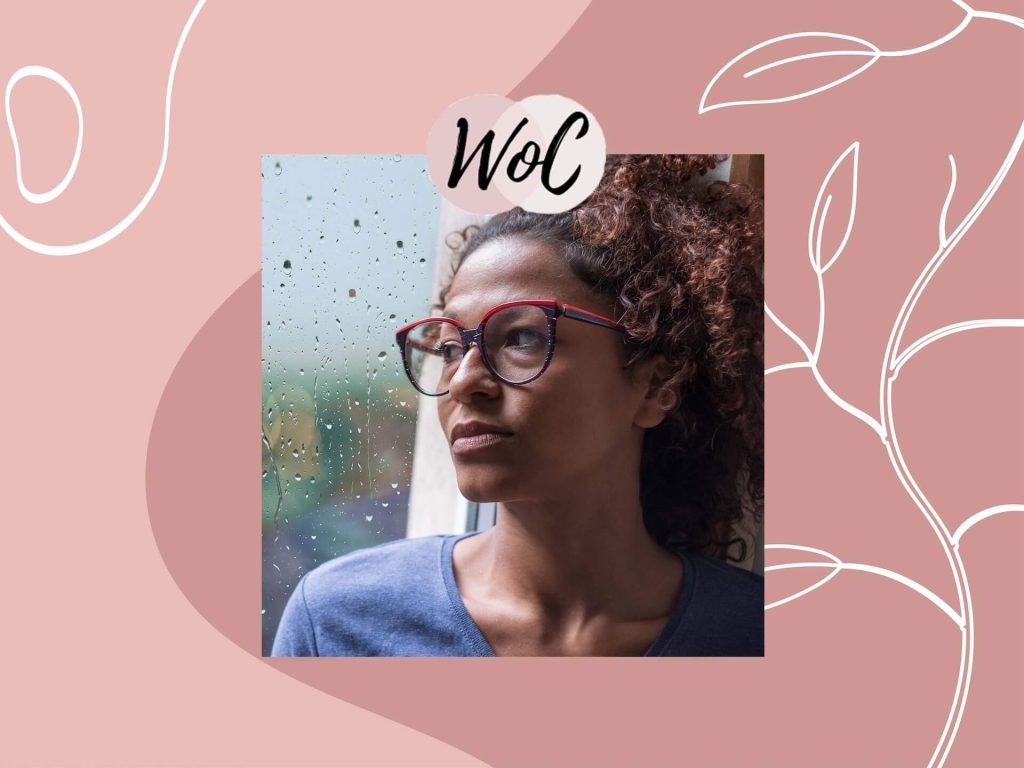Social attitudes towards the LGBTIQA+ community have been getting better in the past decades. However, we are still living in a homophobic culture that creates negative narratives around homosexuality and same-sex attraction. This is also a reason why most non-heterosexual individuals don’t know what is internalized homophobia definition, and they accelerate this oppression, having a hard time accepting their sexuality.
Internalized homophobia occurs among gay, lesbian, and bisexual people, who have been taught by society that heterosexuality is the only proper sexual orientation. Having been indoctrinated from a young age, individuals with internalized homophobia have a hard time dealing with the inside oppression during their life, which often leads them to fatal results.
What Is Internalized Homophobia and How Does It Occur?
Homophobic individuals often create a stigma around gay, lesbian, and non-heterosexual individuals and spread all kinds of stereotypes and myths about them. When a non-heterosexual person believes that those statements are factual, they develop internalized homophobia, meaning they become unwilling to accept their sexuality, feeling ashamed and refusing to become part of the LGBTIQA+ community openly.
It often occurs when a person is growing up in homophobic surroundings, not being able to learn about the freedom of choice, and accepting different sexual orientations. This is why most individuals that are non-heterosexual choose to hide their authentic selves throughout their life at the cost of keeping everyone happy.
How Does Internalized Homophobia Manifest?
Internalized homophobia or internalized heterosexism often occurs when non-heterosexual people deny their true sexuality. However, according to Medical News Today, there are many other manifestations of this state that are considered a result of having a negative view of one’s own or other’s sexual minority identities. Here are some of the examples:
- Unwillingness to accept their sexual orientation,
- Feeling ashamed of their sexual identity,
- Refusing to accept their same-sex partner publicly,
- Trying not to behave in a way that could be perceived as “homosexual” or “non-heterosexual,”
- Having a fear of other individuals mistreating them because of their orientation,
- Judging or discriminating against individuals that freely speak of their “same-sex” orientation,
- Attempting to change their sexual orientation,
- They deny that homophobia and other ways of differentiating the LGBTIQA+ community exist as social problems.
Why Does It Occur Among Certain People?
Internalized heterosexism can occur for various reasons. Most common are cultural norms and rules, which indoctrinate non-heterosexual individuals from a very early age. Many individuals choose to deny their sexuality out of fear. This would be understandable, considering that, according to FBI Hate Crimes Statistics, over 1,000 individuals have been victims of hate crimes due to their sexual orientation in 2020.
Many individuals grow up exposed to beliefs that proclaim antigay bias, and they never get a chance to learn more about different sexualities and same-sex or bisexual relationships. In recent years, the impact of social media has given young individuals an opportunity to learn more about the non-heterosexual communities and dating and self-love tips. However, not being accepted by their families, friends, and other close individuals causes them to struggle for a long time.
What Are the Factors That Affect It?
There are plenty of different factors that support the discrimination of the non-heterosexual community, which then support the growth of internalized homophobia amongst gay individuals. The most common characteristics, and the strongest of all, are considered to be:
- Religious beliefs that promote antigay bias. Most schools, colleges, and other communities that nourish religious and conservative climates are indirectly helping with the development of this state.
- The unsupportive environment has no willingness to accept differences or any kind of same-sex orientation. Lack of support affects individuals, especially younger generations, and they go through adolescence denying their true sexuality.
- Not being introduced to the non-heterosexual communities and not being able to see that many of the antigay stereotypes are increasing the risk of internalized homophobia.
How Does This State Affect a Person’s Mental Health?
Not being able to accept your true identity and living according to your own rules can be pretty stressful. This is why internalized homophobia negatively affects one’s mental health, developing different problems, such as anxiety symptoms, low-self esteem, obsessive thinking, compulsive behaviors, negative body image, struggling with toxic relationships, and many other negative mindsets. It could lead to severe depression and even suicide in the worst case.
According to UCLA Williams Institute, more than 60% of suicide attempts among LGBQ individuals happen after realizing their own sexual minority identity. These devastating results are caused by the inability of many individuals to accept their sexuality and not having the needed support to do so. Many non-heterosexual people go through a mid-twenties crisis once the society’s pressure of settling down and growing a family starts peaking. This is why many individuals who have a hard time accepting themselves show signs of being mentally exhausted from the constant need to deal with the stress of being “different”.
The constant need to pretend, and put on different roles in life and relationships to not get judged by society, creates a negative aura that leads to severe mental health issues. And being in a community that often has misconceptions about mental health, it gets pretty hard deciding to get professional help and support.
How to Deal With Internalized Homophobia and How to Overcome It?
Dealing with internalized homophobia and overcoming it is a long and arduous process that often requires time and effort. It takes years to overcome thoughts that have been planted into someone’s mind from a very early age. Accepting sexuality is a long process, and it’s a constant battle with yourself and your surroundings. However, there are plenty of ways to make this process easier for you.
Getting to Know Some LGBT Communities
One of the factors that cause internalized homophobia is a lack of knowledge and education. It is a common occurrence that individuals are scared of the things that they feel unfamiliar with. Getting to know a particular LGBT community, and learning about specific topics that have often been represented as tabu, can help a person understand themselves better.
Communities such as The LGBT Center create different events and panels where these important subjects are discussed. Getting to know such communities help people make more non-heterosexual acquaintances that could help them on the journey of overcoming their negative perception.
Talking to Friends and Family
The part being open about your sexuality and same-sex relationships can be pretty hard for most individuals, but it’s often the most crucial step. If you find compassion and understanding from your friends and family, the rest of the process will become much more manageable. However, to some individuals, it’s not like that. Some individuals get neglected by their families and have to learn how to take care of themselves, which doesn’t mean they should give up on their path to getting better and dealing with their mental health.
Seeking Professional Help and Getting Therapy
Many people that have grown up in conservative environments have a negative attitude toward mental health, and they are often in disbelief when it comes to therapy. It is always the most challenging part for many individuals to decide to make that hardest first step and book their first therapy appointment. Many are discouraged by the individuals in their surroundings, who are skeptical about whether or not the therapy works.
Once they start going to therapy and realizing why self-care is so important, they manage to see that not everything is as they have been taught. To many individuals, therapy sessions are a comfort zone, making it easier to overcome their issues.
How to Be an Ally to People Struggling With Coming Out?
Being a heterosexual person doesn’t necessarily mean you should be uninterested in learning more about the gay and lesbian community, different sexualities, and daily problems non-heterosexual individuals deal with. Being a heterosexual does not mean you shouldn’t offer help and support to individuals struggling with internalized homophobia and the fear of accepting their sexuality.
It’s always a nice gesture to reach out to friends you know are struggling with these issues. It is crucial to understand how necessary it is to be an ally and speak out against anti-gay and anti-lesbian statements. Fostering diversity and accepting differences is very important in a culture like ours.
Be Free to Reach Out to the Women of Color Community to Get the Needed Support of a Therapist
Dealing with internalized homophobia, hostile surroundings, and lack of acceptance from your community is especially hard when you have to be fighting for racial equality and gender equality at the same time. This is why we – The Women of Color – offer support to many women struggling with mental health issues.
Feel free to contact us to find out more about our services and our therapists. Our WOC workshops are helping women of color work on their self-improvement and bettering their life. We can’t wait to see you at some of our future workshops!


